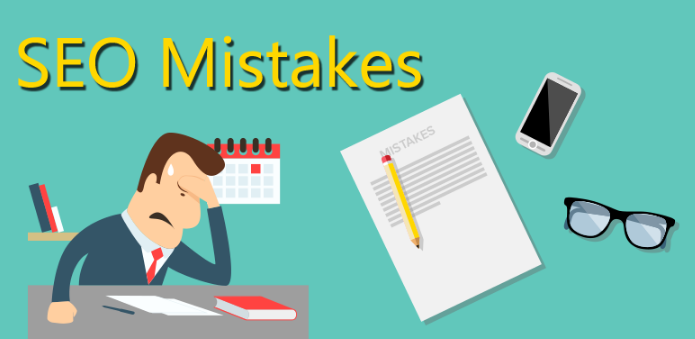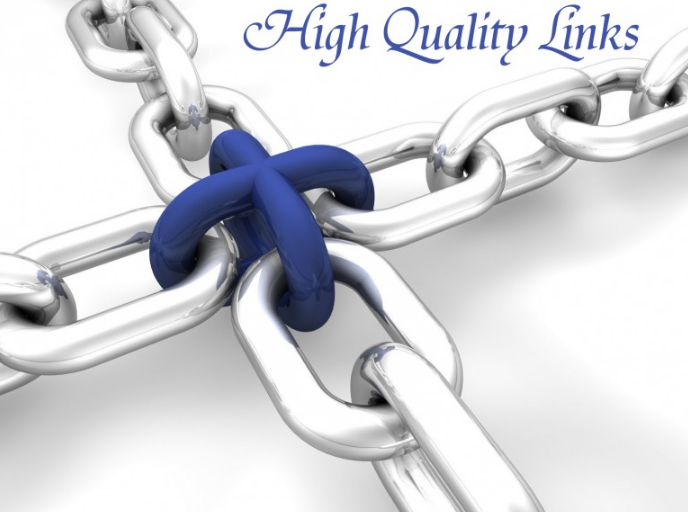9 Most Common Mistakes in SEO You Should Avoid

What are the most common mistakes in SEO that even the SEO experts are inevitable in the process of Website Optimization? Let’s take a look at these 9 most common mistakes and improve them to increase traffic and increase conversion rates.
Optimizing a website or blog is a necessary element in any content marketing campaign. Although SEO is volatile, it is still being concerned by content marketers because it is the most powerful way to bring in potential customers and direct them to the sales channel.
SEO methods constantly change to meet the ongoing development of the search engine and the changes caused by the user’s perspective brings. Doing SEO for the website always needs improvement, updating. If the SEO strategy is not good or SEO is not effective then you will never get what you have expected is a large amount of traffic and high conversion rates.
There are some common SEO mistakes that are difficult to avoid. Testing the optimization process is very difficult because you can not verify your method immediately. And especially predicting the rules of the search engine is becoming more difficult than before.
Take a look at the 9 most common SEO mistakes that you should avoid in the optimization process for your website.
1. Choose the wrong keyword
Optimization depends on the targeted keywords that are ranked for your site. But did you choose the right keywords? One of the most common mistakes in choosing keywords is ignoring long tail keywords (preferred by search engines and users). Although you can define or name your products in a certain way, however, you need to grasp the key points that customers will care about, how they will name your products, what they will type to search.
Sometimes you think you have picked the right keywords, but to others, it is not like that or they are too generic. Therefore, before you start optimizing, you need to thoroughly research and analyze your keywords. You can also use keyword analysis tools like:
2. Stuff keyword
You may think that using target keywords in each content will increase the ranking. However, this wrong strategy cannot be continued. In fact, overuse of keywords will be considered spam by the search engines, and thus negatively affect your SEO performance.
“Stuffing” at any cost or excessive use of keywords is not the key to successful SEO. Such approach will make your content unnatural and useless to the reader. In fact, Google is applying a latent semantic search algorithm called LSI (Latent Semantic Indexing). This program can recognize the content theme and therefore you do not have to stuff the content by repeating the target keywords. So how much keyword density is good for SEO? The answer is 1.5%.
3. Create Content that is not Relevant to Keywords
Another common mistake in SEO is to create content that does not match the keywords. The problem here is that you want to rank for a certain keyword but cannot focus on the target topic. Search engines like Google need to meet the information search needs of the user, so the content of the article must be closely related to the target keyword – the search terms. Therefore, content that does not meet user needs will not rank high on the search results page.
You need to set the goal for writing the content that they have to be created on the platform is the answer. The answer is that the search terms really fit the query and the needs of readers. The answer is that the search terms really fit the query and the needs of readers. The search engine will then be able to mark the content as relevant to the keyword which is optimized.
4. Publishing content is non-original
This next typical error relates to the quality of your content. Today copying documents is a common practice however search engines have improved to have penalties for this problem.
There will be no room for duplicate and superficial content. Instead of copying, you should invest time and effort in creating the original text, which really makes sense. This is the only way to ensure and maintain your site’s ranking on search results pages.
5. Ignore Title Tags and Meta Description
It will not be comprehensive optimization once the target keywords have not been included in your article. You should not ignore the title tags and meta descriptions, the essential elements of SEO. Ignoring them means you have missed a huge potential for your content. These optimization elements are considered by the search engines when they crawl the site so if properly done they will improve the performance of the content.
A technical detail that content marketers sometimes forget, is the inclusion of image description tags (alt tags). It is important to use alt tags for images when you include them in your content, as they are another indication of how you are targeting posts. Search programs cannot see images – but they can read alt tags and add this information to the process of indexing your pages.
6. Lack of quality links
For the most effective SEO, we need to keep in mind the quality of outbound links when incorporated in the article content. Outbound links may not require much, but must be “quality”. Outbound links must be links to relevant and reputable sites.
7. Use internal links improperly
You should also watch out for common mistakes while using internal links. Of course, it is important to think about your top-performing pages and consider placing links to them in your content. This is a way to increase visibility and create more constraints for pages.
But make sure that the use of internal links in the article is appropriate, not just because the goal is to have them in an article. Internal links should be relevant to the subject and Internal links should be relevant to the subject and focus of the paragraph or article.
Just like the abuse of “keyword stuffing”, here you must avoid using internal links. If the content and the link look unnatural then your article will not be appreciated by the target audience and the search engines, and the high possibility is that they can be seen as fraudulent behavior.
8. Do not stay focused on speed and not friendly-mobile
Optimizing SEO is not just about content and keywords. That is also about the quality of your website, especially its performance on mobile devices, which is the top choice of users today. Google and other search engines may recognize when your site is not mobile-friendly. If the mobile experience is not yet rated highly, it is not yet smooth for the user, it is likely your ranking on the search engine will be seriously affected.
Download speeds are similar because search engines also focus on that. It is no surprise that a slower website will suffer a lower ranking in the SERP. You can use online tools such as Google PageSpeed Insight to analyze and solve problems with page load speed.
9. Forget the analysis problem
Last but not least, use analytics tools to track the progress of optimizing and optimizing search content. Many marketers will skip this step, but this is a serious mistake. Establishing and regularly reviewing analytics is essential for your optimization results. Google Analytics and Google Webmaster Tools are just two of the main tools you can use to measure and get an overview of your site’s performance. With the help of these tools, you can track the optimization that takes place across different content types and assess the impact of each of the different strategies you are applying.
Conclusion
Nowadays, search engine optimization (SEO) is an integral part of any content marketing strategy. You can find plenty of advice online about SEO, but keep in mind especially the typical SEO mistakes. It is best to get acquainted with them, with the challenges that others have encountered, then avoid getting them in your marketing efforts. These 9 errors have been proven to be quite common, so it is easy to recognize them.









